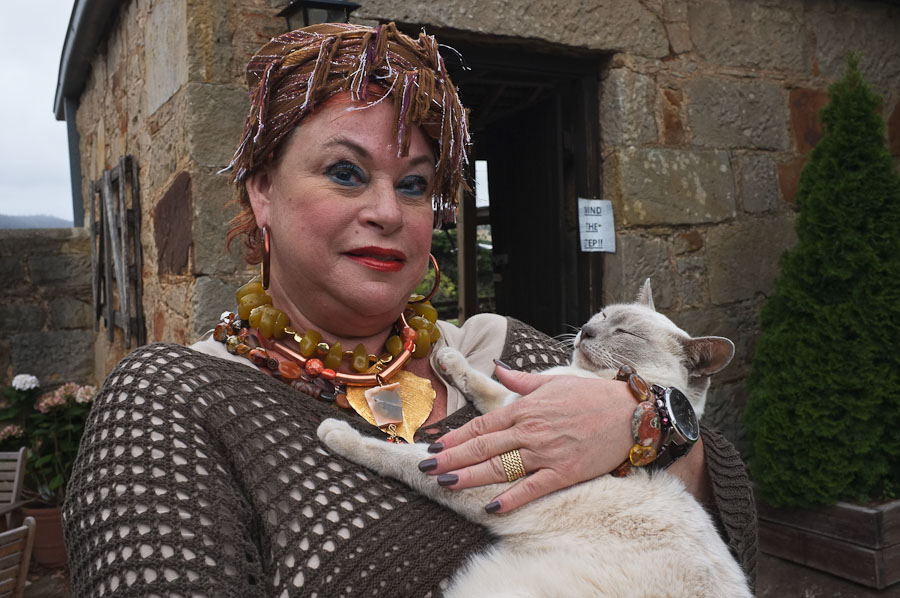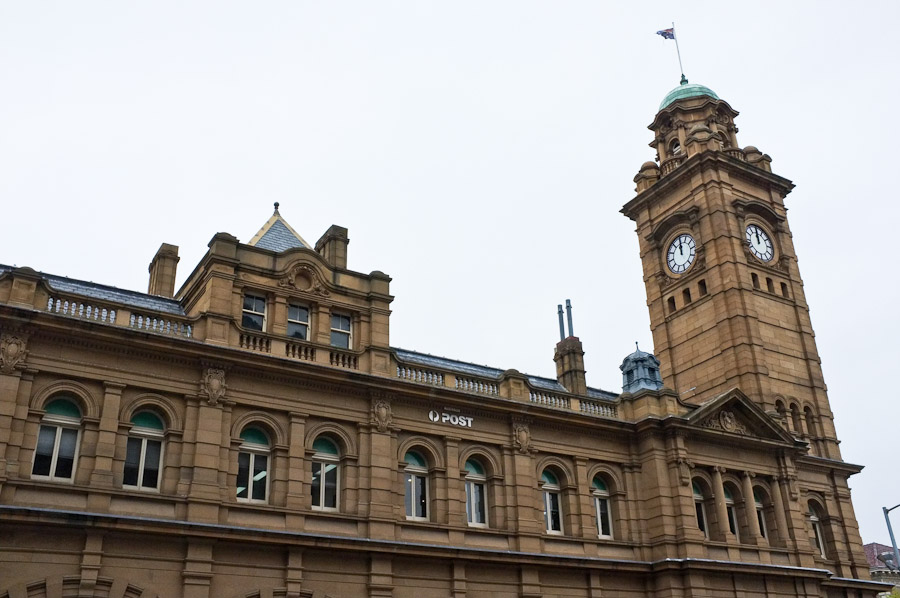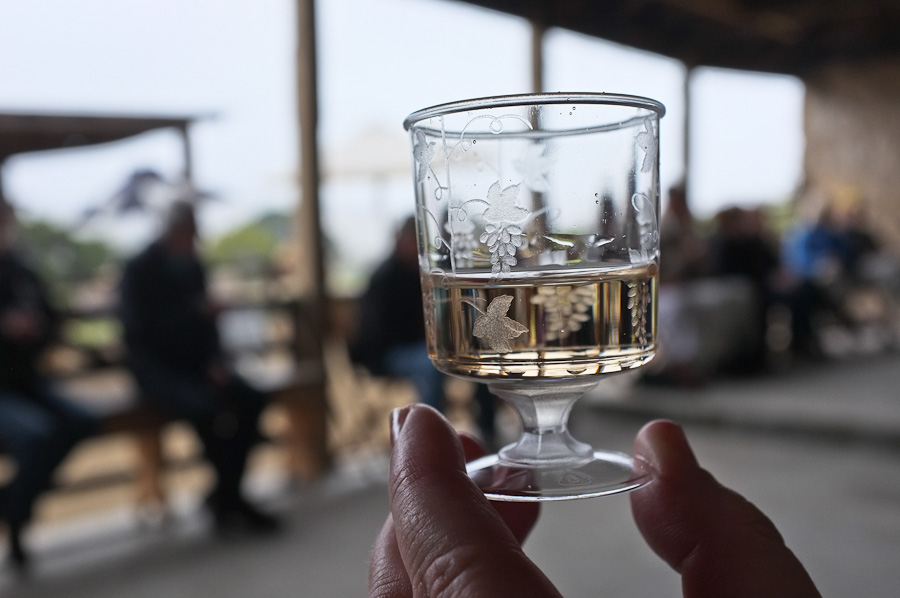We arrived on solid ground this morning in Hobart, Tasmania glad that the crossing of the Tasman Sea is behind us but sad to see that it is another grey day. Not much need to worry about sunscreen on this trip so far.
Tasmania is a significant Australian island and state. It is 150 miles south of the “mainland” of Australia, separated by the Bass Strait, which is another challenging crossing. The state includes the island of Tasmania, the 26th largest island in the world, and the surrounding 334 islands! We really didn’t understand much at all about this place until we had a chance to look around and came away very impressed.
Click here for the detailed Tasmania Photo Gallery.
We cleared Australian customs on-board with an eye-to-eye meeting with their nice agents and made our way to the shuttle bus to explore the city before heading out on our 1:00 pm “Oysters and Wine” tour. The city is close to the pier, so the ride was short. We walked around a bit and Dale started taking pictures with his new toy, the Fuji X100 camera, while I scouted out an ATM. After a quick stroll around town we headed back toward the waterfront and eventually made our way back to the ship for lunch. It is a nice, smallish city that is clean, friendly and full of interesting buildings and stories from the past. At 1:00 pm we boarded our coach for the afternoon Oyster and Wine adventure.
The first thing we noticed different about this tour compared to the others we’ve been on is that there was a driver and a separate guide. Normally the driver acts as your guide which at times has made us a bit nervous, especially when we are traversing narrow windy roads and the driver is chatting away about the countryside.
These guys, Kerry and Eric, were a riot! I don’t know if they knew how funny they were (they were seemingly oblivious to our reaction to them), but they had us near tears. They were chatting between themselves, as they drove through the city, about things like which pubs have the best whiskey and beer all the while speaking into a microphone rigged to the speakers throughout the bus. They weren’t really telling us, they were just having a friendly chat. Once in a while they’d hear one of us yell out “So, can you tell us about those birds over there!” And a few minutes later (after the birds were long past) they’d say “You said something about birds, yea, the birds, don’t think I saw them, but if they were black then they were wild hens…don’t know to much about that though…”. Their accents were thick and, while they sounded a bit drunk, we hoped that they weren’t but somehow we knew they’d be heading straight to the pub with their tip money after our tour was complete!
Our first stop was at a beautiful winery called Pooley. They had us all sit in chairs in a covered area and, as the wine maker gave us background information, we tasted four different wines. They were all very good. Unfortunately we learned that Pooley does not distribute to the U.S. This is often the case when you find great local wines in foreign countries…their production doesn’t warrant shipping overseas and they tend to keep the good stuff for their home countrymen.
Back on the bus we made our way to the Barilla Bay Oyster Farm. They showed us the ins and outs of growing oysters. This was particularly interesting to us as we’d seen a Pearl (Oyster) Farm last month in Raiatea (January 19). This farm was for the eating kind…nice, big and juicy oysters…just the kind that Dale and I love with a nice Sancerre!
Growing oysters for consumption is quite different, although, in the end, you just let the oyster grow while checking on it once in a while. The biggest differences are a.) the temperature of the water (cold for eating and warm for pacific pearls), and b.) the preparation of the oyster. Growing pearls requires operating on the oyster to place foreign “seed” pearls inside and then affixing them onto long ropes that hang from buoys in fairly deep water. Growing oysters for food is much easier. You basically put them out in the water in various types of basket-type enclosures and let them grow in fairly shallow areas, then harvest them by driving tractors out during low tide and grabbing the baskets.
We got a good overview of the farm operation, including the sorting machines and the “fields” where they had over 8 million oysters growing! Last but not least, we got to eat some of them. They were yummy, especially with a glass of local Tasmanian Riesling.
Once back on the bus, the “boys” gave us an overview of the area including some of the history and folklore. It was difficult to understand what exactly they were saying…but it sounded good and they were having a fun time of it! We finished the tour by driving to a hill that gave us a great view of the city, their pretty bridge and, of course, the Voyager in the distant port.
Almost last, but not least, we never did see a Tasmanian Devil while in Tasmania. One lady did see on on the side of the road while we were on the final run in the bus but she failed to tell anyone until it was long gone. But, as you’ll see on our later wildlife sanctuary tours I’m sure, they look sort of like a dog with a pugged nose but really are similar in nature to a calmed down raccoon. Not really much of a threat as the name would indicate…just a fairly mellow scavenger.
We were pleasantly surprised with this area. Tasmania offers a modern city, beautiful landscapes, lush greenery and wonderful wineries! We’d definitely come back here again. They have a wonderful lifestyle and it would be a good place to live.
Photography Comments:
Another bus tour day and another typical gray, nearly white-out skies. Tasmania is a beautiful place even in the rain but I’m sure it would be dazzling photographically on a blue sky, white puffy cloud kind of day. The oyster farm was the kind of place that photographers love to hang out in for a while with lots of interesting nooks and crannies here and there. The old tractor drew me in to the point that I walked all the way back to it while everyone else was eating oysters. It reminded me of the tractors in the tractor tipping scene in the movie Cars.
The oyster traps were another interesting thing to photograph as were the colorful plastic crates in one of the barns. Everyone else thought I was crazy for taking pictures of them but I sort of like the results. You don’t see those everyday! It would have been nice to have an hour to shoot the beautiful buildings as the winery. Sorry I didn’t get better pictures of the actual wine tasting event. I was busy enjoying the wine! The picture of the woman with the cat was, I think, pretty good. The Fuji X100 does an amazing job on portrait work and, in this case, the lighting was perfect.



.jpg)



Trip Summary » Travel with Dale & Margaret - […] Hobart, Tasmania […]